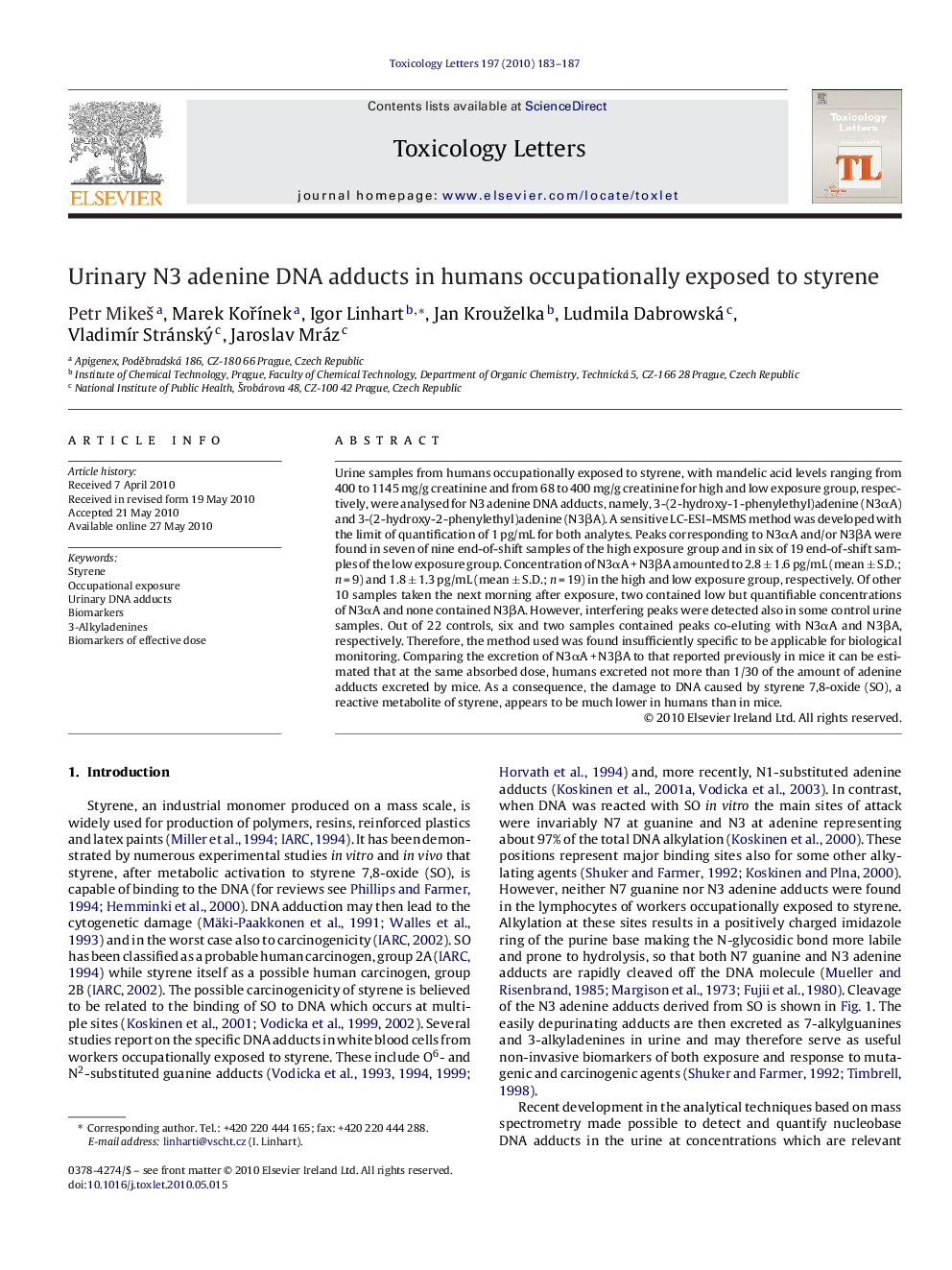| Article ID | Journal | Published Year | Pages | File Type |
|---|---|---|---|---|
| 2600714 | Toxicology Letters | 2010 | 5 Pages |
Abstract
Urine samples from humans occupationally exposed to styrene, with mandelic acid levels ranging from 400 to 1145 mg/g creatinine and from 68 to 400 mg/g creatinine for high and low exposure group, respectively, were analysed for N3 adenine DNA adducts, namely, 3-(2-hydroxy-1-phenylethyl)adenine (N3αA) and 3-(2-hydroxy-2-phenylethyl)adenine (N3βA). A sensitive LC-ESI-MSMS method was developed with the limit of quantification of 1 pg/mL for both analytes. Peaks corresponding to N3αA and/or N3βA were found in seven of nine end-of-shift samples of the high exposure group and in six of 19 end-of-shift samples of the low exposure group. Concentration of N3αA + N3βA amounted to 2.8 ± 1.6 pg/mL (mean ± S.D.; n = 9) and 1.8 ± 1.3 pg/mL (mean ± S.D.; n = 19) in the high and low exposure group, respectively. Of other 10 samples taken the next morning after exposure, two contained low but quantifiable concentrations of N3αA and none contained N3βA. However, interfering peaks were detected also in some control urine samples. Out of 22 controls, six and two samples contained peaks co-eluting with N3αA and N3βA, respectively. Therefore, the method used was found insufficiently specific to be applicable for biological monitoring. Comparing the excretion of N3αA + N3βA to that reported previously in mice it can be estimated that at the same absorbed dose, humans excreted not more than 1/30 of the amount of adenine adducts excreted by mice. As a consequence, the damage to DNA caused by styrene 7,8-oxide (SO), a reactive metabolite of styrene, appears to be much lower in humans than in mice.
Related Topics
Life Sciences
Environmental Science
Health, Toxicology and Mutagenesis
Authors
Petr MikeÅ¡, Marek KoÅÃnek, Igor Linhart, Jan Krouželka, Ludmila Dabrowská, VladimÃr Stránský, Jaroslav Mráz,
